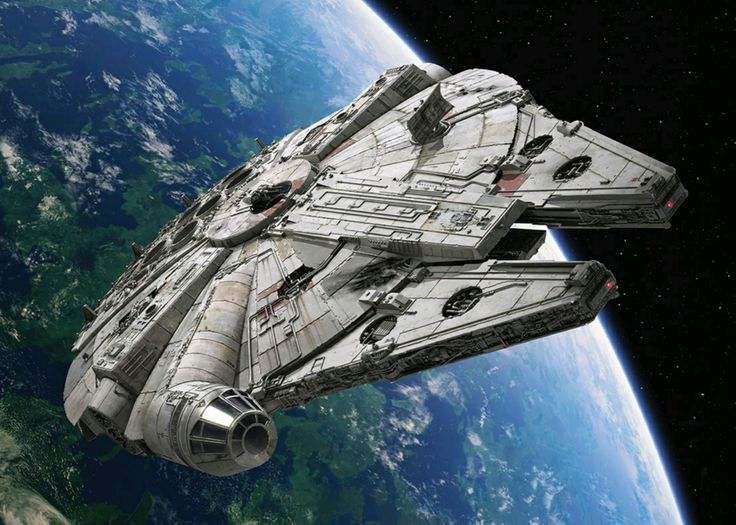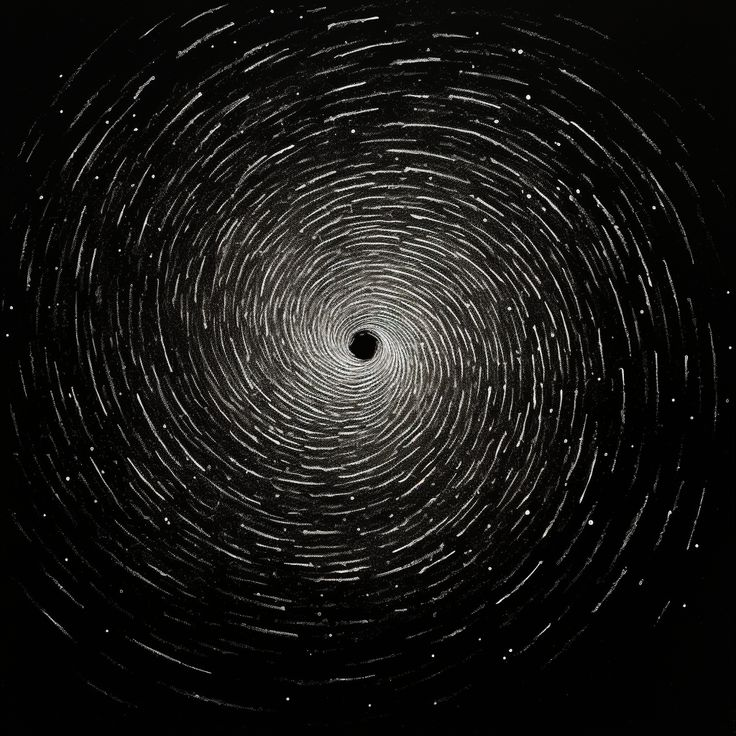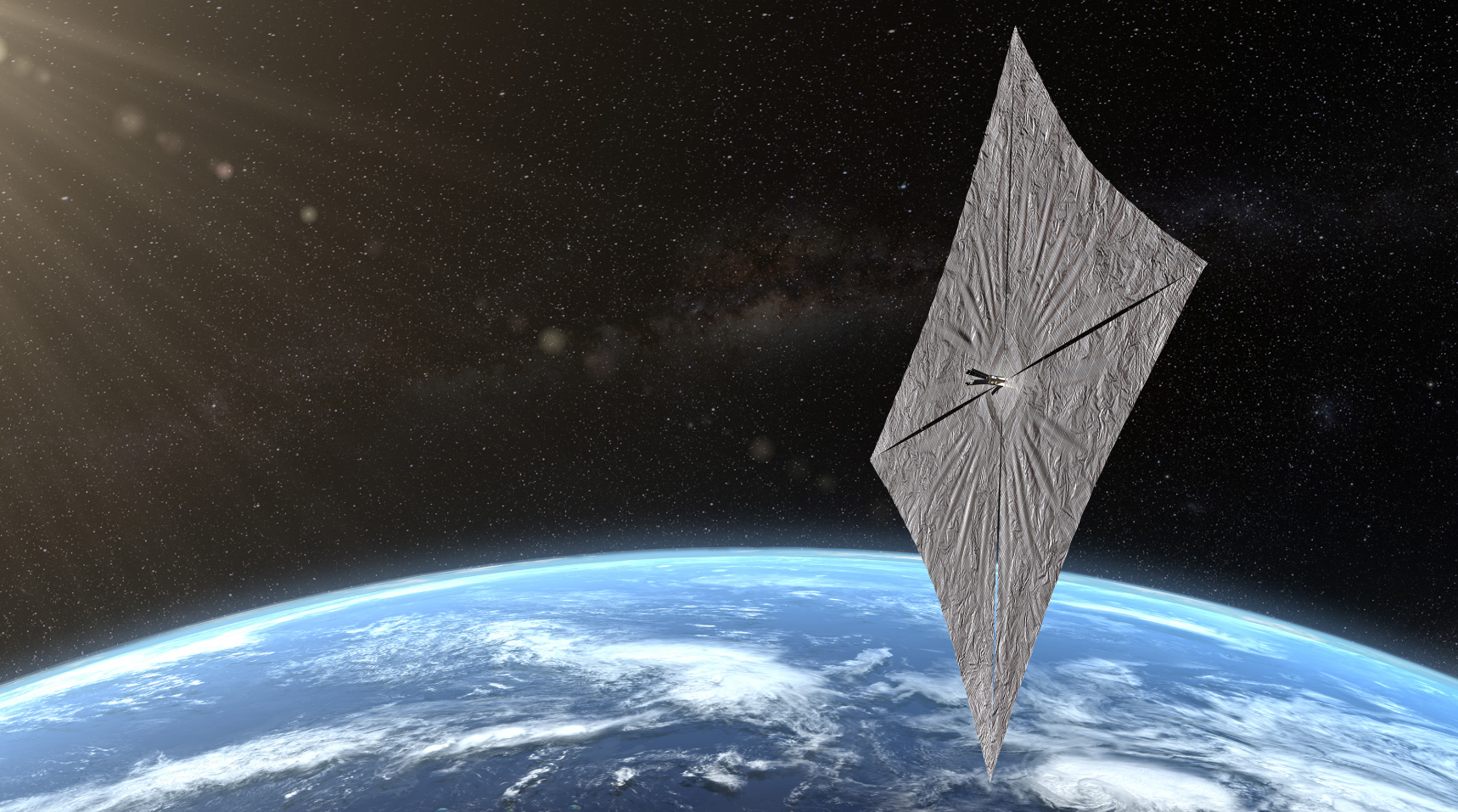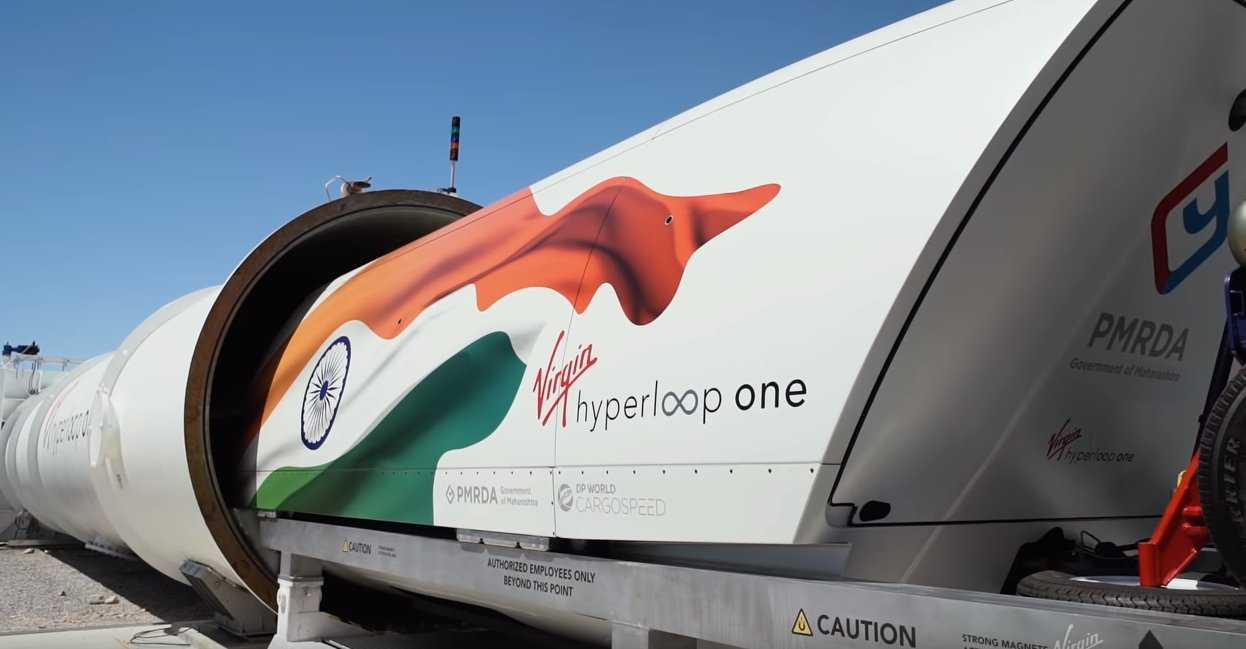Premiered on May 25, 1977 in Star Wars: A New Hope – Immediately described by Luke Skywalker as “garbage,” yet Millennium Falcon became one of the most iconic starships ever.
From 1975-1977 on the star wars set, Ralph McQuarrie, a conceptual artist, sketched early spaceship ideas. One linear design evolved into the Tantive IV (Leia’s cruiser), but Lucas wanted something more rugged for Han Solo. Joe Johnston, working from those sketches, famously used two bowls (“burger and olive”) to create the Falcon’s asymmetrical hull and off‑center cockpit. The model was built using “kitbashing” — repurposed airplane and race‑car parts (even from Ferrari and McLaren models), giving the Falcon its worn, realistic detail. Roger Christian, art director, brought in junkyard details — oil drips, mismatched panels — inspired by WWII technology and a “old race‑car” aesthetic. The name Millennium Falcon and its characterization as “the fastest hunk of junk in the galaxy” reinforced this lived‑in, character‑rich design that became an instant icon.
In Solo: A Star Wars Story and Force Awakens, production teams like Darren Gilford referenced original blueprints and three versions of the Falcon, updating details (like spring-loaded switches) while maintaining its legendary charm.

In Star Wars universe, ships need to travel faster than light speed to reach other places across the galaxy. It was at any rate a dimension of space-time alternative to that of real space. It could only be accessed through molecular displacement, which was achieved by breaking the speed of light. The process created a simu-tunnel, a pocket of real space allowing safe travel through the alternate dimension.
19th Century & Earlier Intergalactic Travel:
True intergalactic travel was rare in early fiction, but interplanetary voyages set the stage.
1.Ancient roots:
- Lucian of Samosata (2nd C AD) wrote A True History — a satirical tale including lunar wars and space travel
2. Scientific romances of the 17th–18th centuries:
- Johannes Kepler published Somnium (1634), envisioning a journey to the Moon to promote Copernican ideas
- Francis Godwin’s The Man in the Moone (1638) depicted flight to the Moon via a giant bird-drawn ship
3. Towering 19th‑century influences:
- Jules Verne, in From the Earth to the Moon (1865), described a Columbiad cannon propelling travelers to the Moon — blending imagination with then‑modern ballistics
- H. G. Wells followed with The War of the Worlds (1898), featuring bullet‑shaped Martian spacecraft — population-shaking science‑rooted fantasy
the Falcon sparked imagination that crossed into reality:
Navicomputer & Autonomous Navigation
- In Star Wars, Han credits the Falcon’s navicomputer for hyperspace navigation — dodging stars and supernovas.
- Today, astronomers at the Max Planck Institute simulate automatic star-based navigation for spacecraft traveling at fractions of light-speed — a nod to the Falcon’s navigational system .
Plasma-Based Deflector Shields
- Inspired by on-screen shields, UK students and Boeing researchers explored using plasma as a protective barrier around vehicles.
Repair-First Design Philosophy
- As noted by robotics futurists, the Falcon’s “hot-rod, hackable tech” looks like it’s been junkyard-assembled yet remains ultra-functional.
- This aesthetic influenced the rise of modular, repairable robotics — machines that can be fixed on-site by users, not experts
These stories sparked imaginations :
- Robert Goddard, inspired by Verne and Wells, pioneered liquid‑fuel rocketry. Early space scientists often cited Verne as their muse.
- Konstantin Tsiolkovsky, inspired by these narratives, formulated the rocketry and orbital mechanics theories essential for real-world space travel
Why the Millennium Falcon can be considered a goldmine for intergalactic spaceship tech :
— not because it’s real, but because it models layered, visionary systems that engineers, physicists, and sci-fi thinkers keep returning to for conceptual breakthroughs.
1. Lived-In, Repairable Design
- Most sci-fi ships are sleek, sterile, or impossibly perfect.
- The Falcon is clunky, patchworked, with cables hanging and systems overloaded — yet still outperforms.
- This inspires real-life spacecraft engineering to value repairability and modularity, crucial for long-term missions like Mars or Europa bases.
- It’s basically the ISS meets a muscle car: functional, field-fixable, and future-ready.
2. Navicomputer & Instant Hyperspace
- Falcon’s hyperspace jumps aren’t just “magic” — they imply:
- Real-time gravitational mapping
- Trajectory prediction avoiding stellar objects
- AI-assisted course optimization
- These are current challenges in autonomous deep-space navigation. Think NASA’s XNAV (X-ray Navigation) or pulsar-based positioning.
3. Overclocked Power & Redundant Systems
- The Falcon runs on multiple subsystems, has hyperdrive backups, and can re-route energy.
- That mirrors concepts in modern nuclear-powered deep space probes, like Voyager, but with way more adaptability.
- Such redundancy design is what DARPA, ISRO, and NASA are pushing for in long-haul missions.
4. Customization = Sovereignty
- It’s a ship not owned by a government, but by an individual.
- That’s where private spaceflight (SpaceX, Blue Origin, Rocket Lab) finds its roots.
- In a future of space colonization, individuals or collectives owning such adaptable ships will mirror the Falcon spirit.
5. Inspires Human-Ship Bond
- Han and the Falcon aren’t pilot and machine — they’re partners.
- This emotional integration pushes the idea of neuro-AI integration, ship-as-avatar, and organic interface design — hot topics in neurotech labs and defense aerospace.

Today with active research bringing us closer to futuristic, intergalactic-style spacecraft:
1. Autonomous Navigation – XNAV (Pulsar Navigation)
- NASA/NICER–SEXTANT experiments on the ISS used X‑ray pulses from pulsars to autonomously locate itself to within ~3 miles—demonstrating deep-space “cosmic GPS”
- Compact units like PODIUM (6 kg, 20 W) are now being developed to bring XNAV onto interplanetary missions
- OpenXNAV is an open-source toolkit from JHU-APL for simulating and testing pulsar-based navigation systems
2. Redundancy & Precision Timing – Deep Space Atomic Clock (DSAC)
- DSAC, launched in 2019, achieved stability to within 1 nanosecond over ten days, enabling spacecraft to perform autonomous radio navigation
3. Modular, Serviceable Spacecraft & In-Orbit Construction
- NASA’s Reconfigurable Operational spacecraft for Science and Exploration (ROSE) envisions satellites that can be serviced and upgraded in space.
- Projects like In-Orbit Additive Construction propose modular swarms of satellites that autonomously assemble structures in orbit .
- The Modular Common Spacecraft Bus (MCSB) built for the LADEE lunar orbiter uses generic modules—US$ prototype cost was only ~$4M and later applied to commercial missions
4. Star-based Dead-reckoning – StarNAV
- Research on StarNAV uses small shifts in star light (due to spacecraft velocity and relativity) to allow autonomous optical navigation
As you can see, features that make the Millennium Falcon feel real—autonomous navigation, modular repair, redundancy, star-based positioning—are already in progress or near-term reality.
For me Millennium Falcon was my childhood buddy, It shaped my curiosity for spaceships, The way it hummed, jumped to hyperspace, and defied the odds—it wasn’t perfect, but it meant something. That kind of emotional imprint stays for life.
If mankind ever design Millennium Falcon someday, I hope they give it that same soul—the kind that makes a kid fall in love with the stars










